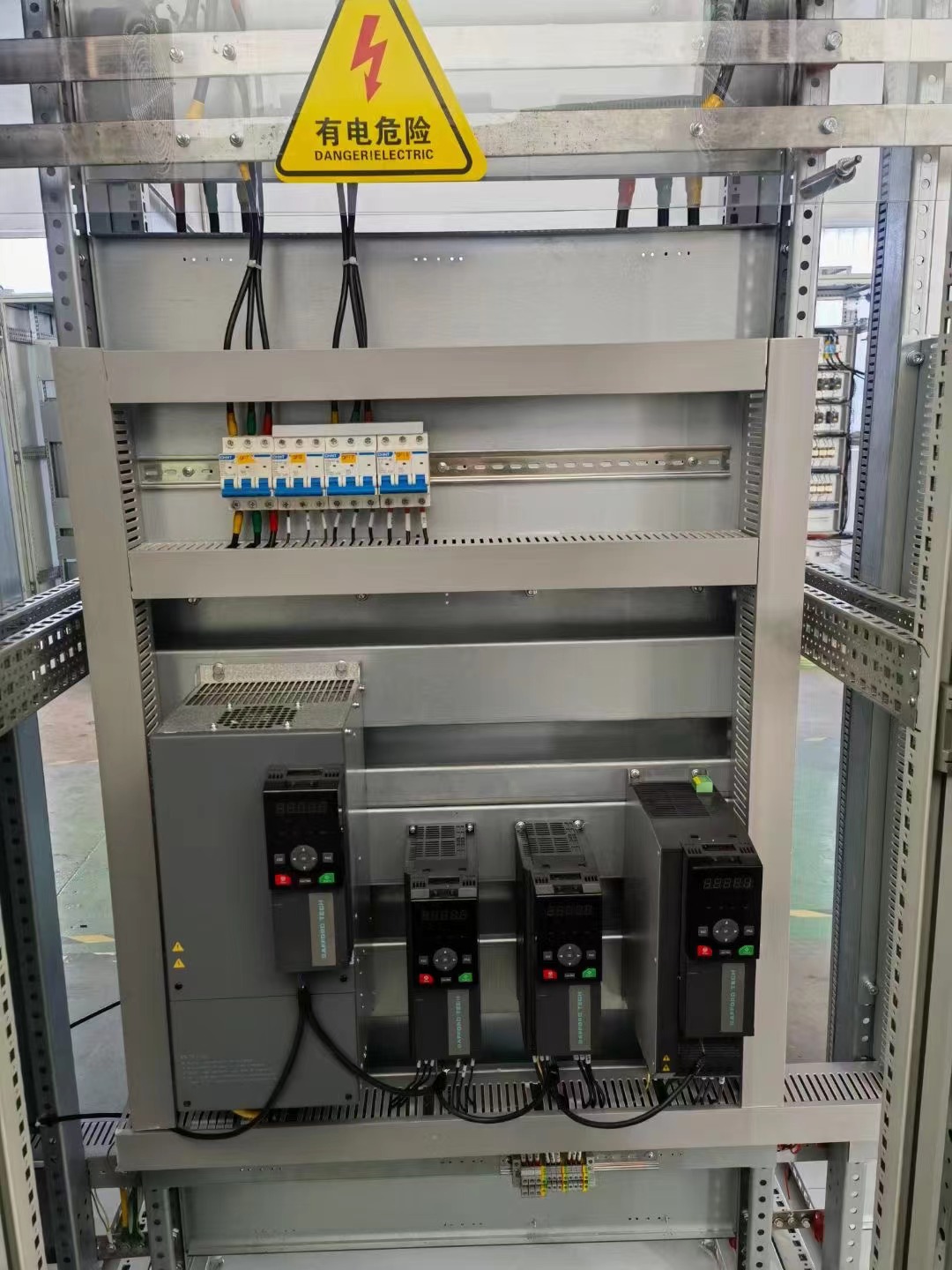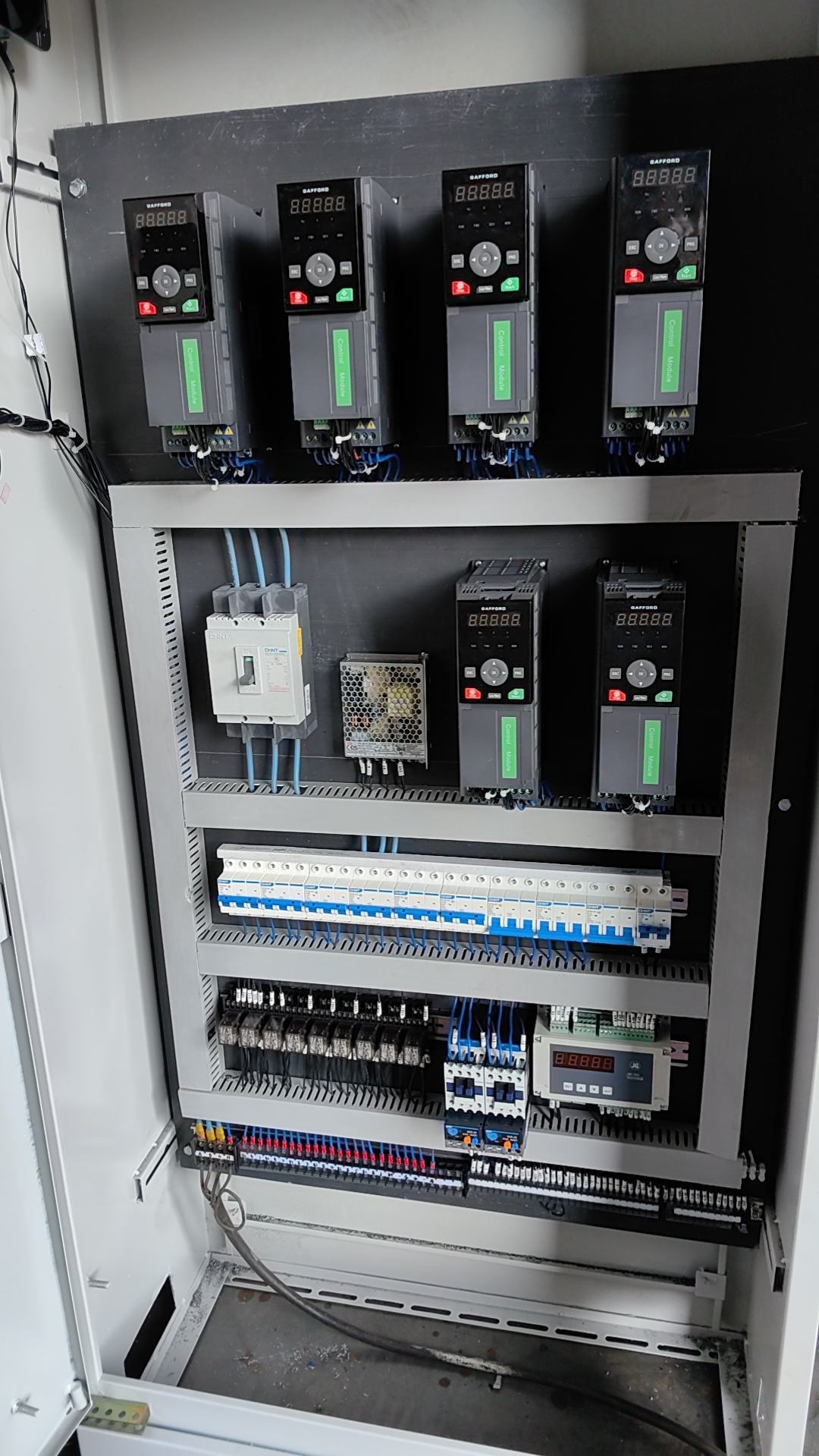The inverter protects the motor, but that doesn't mean the motor won't burn out. For most cases, the inverter is to protect the motor does not burn, such as, overload, lack of equal, but it depends on your parameters and actual use, for example, your overcurrent protection settings are too large (generally the default is 150%) , you turn up the motor for a long time in 100% rated current above operation, it is easy to burn motor. For example, frequent starting and stopping, coupled with high current, if overload is simply reset and then open, it is also easy to burn motor.
If you want the inverter to play a complete protection role on the motor, from the process, the setting should be noted that the setting of parameters correctly, can not blindly increase the overload factor, etc. . On the process to pay attention to load changes (we require the general current is not more than 90% , more than the control, check) .
First,Why the inverter will burn the motor
The heat dissipation of an ordinary asynchronous motor depends on the fan behind the motor to blow away the heat, if the long-term low-frequency operation (that is, long-term operation in the motor's rated frequency below the motor speed, low fan blowing wind volume is small, so that the motor cooling poor, too hot will burn the motor. If there is a problem with the motor, the motor current will increase. Exceeding the maximum current of the converter, the converter will be protected to stop the output while reporting a fault code to the user. The transducer shows that OC means overcurrent. The solution is to change the motor into a special frequency conversion motor, or to add a motor cooling fan. Or change the power of the larger motor.
Second, technical interpretation of the burner
“Most of the frequency converters that burn motors are inter-turn short-circuits, inter-phase short-circuits, and short-circuits to the ground. Why do frequency converters burn motors easily, and most of them are frequency conversion motors? What are the technical specifications related to?” The motor winding input is three-phase 50Hz sinusoidal voltage, winding induced voltage is also low, the circuit surge component is small. Under the condition of frequency conversion and power supply, the inverter part of the inverter converts the DC voltage into the three-phase electric power voltage, and the output of the three-phase electric power voltage is realized by controlling the switch elements of the six bridge arms to turn on and off. After the frequency converter is connected, the carrier frequency is about thousands to tens of thousands of kilohertz, which makes the stator windings of the motor to bear a very high voltage rise rate, which is equivalent to applying a very steep impulse voltage to the motor, make the turn-to-turn insulation of the motor to withstand more severe tests. The increase of voltage change rate (dv/dt) makes the winding voltage change rate (dv/dt) very high, and the winding voltage distribution becomes very uneven. The fault of winding inter-turn short circuit increases and the motor fault rate increases. The PWM waveform of the inverter output, in the motor winding power supply circuit, will also produce various components of harmonic voltage. According to the inductance characteristics, the faster the inductance current changes, the higher the inductance voltage is.

The induced voltage of motor windings is higher than that of power frequency supply. The insulation defect, which can not be exposed in power frequency power supply, can not withstand the impulse of voltage induced by high frequency carrier, so the voltage breakdown between turns or between turns of windings is produced. As we all know, the inverter has a perfect protection circuit, with the inverter, the motor really will not burn it? The answer must be no, the inverter protection circuit is not universal. Compared with power frequency supply, with the frequency converter, the motor is easier to burn. The phase-to-phase, turn-to-turn short circuit or earthing of the motor windings cause the sudden short circuit of the motor windings, which may blow up the module or burn down the motor in operation. The output voltage waveform of the inverter, under the influence of the high-speed switching of the semiconductor switch, the impact will make the voltage superimposed on the motor operating voltage, and will produce the pulse overvoltage on the motor terminal, the peak value is about 2 times of the DC voltage, which is a threat to the ground insulation of the motor.
Three,The reason of motor burning caused by frequency converter

In fact, motor fault is not the motor itself, most of the frequency converter debugging is not standard or non-frequency conversion motor when the use of frequency conversion motor caused by such reasons, there are mainly the following cases:
1, the ordinary motor as a frequency conversion motor to use
Because the ordinary motor cooling fan is connected with the rotating shaft, when the speed is regulated by the frequency converter, the speed is not stable and can not reach the rated speed of the motor In addition, ordinary motor is not according to the requirements of frequency conversion design, so that the motor heating or burning.
2, the frequency conversion motor and the frequency converter are directly connected together without debugging
Vector control and V/F curve control are the two most commonly used methods to control motor, each control mode must first set up the type of motor (synchronous, asynchronous, with or without encoder) , rated power, rated voltage, rated current, speed or pole number, rated frequency, maximum operating frequency, acceleration and deceleration time of motor starting and stopping, the protection mode of motor controlled by frequency converter, as well as the protection proportional coefficient, carrier frequency, etc. , one is indispensable. After these parameters are set, we can choose vector control or V/F control. When choosing the vector control, the motor must be paired with the inverter to learn dynamically or to learn statically with load. After learning, the motor can cooperate with the inverter to bring the accuracy of vector control into play When the choice of V/F control does not need self-learning, parameters adjusted after direct power operation.
3. The running direction of the fan of the inverter-fed motor is different from the direction of rotation marked on the fan, the fan can not play its role, causing the heat dissipation condition of the motor to become worse, and the heat generated by the motor can not be sent out, causing the motor to heat up or burn out.
4. Two or three of the above three conditions occur the most
In view of the above situation, it is suggested that when customers choose frequency converter to control motors, they should choose frequency converter motors and select manufacturers with good quality. Although the advance investment is a little higher, the quality is guaranteed and the trouble-free operation time is long, not easy to cause due to motor or inverter failure caused by the shutdown, and the quality of the inverter after-sales service is guaranteed, fast response time.
Source: internet (for study only, intrusion and deletion)